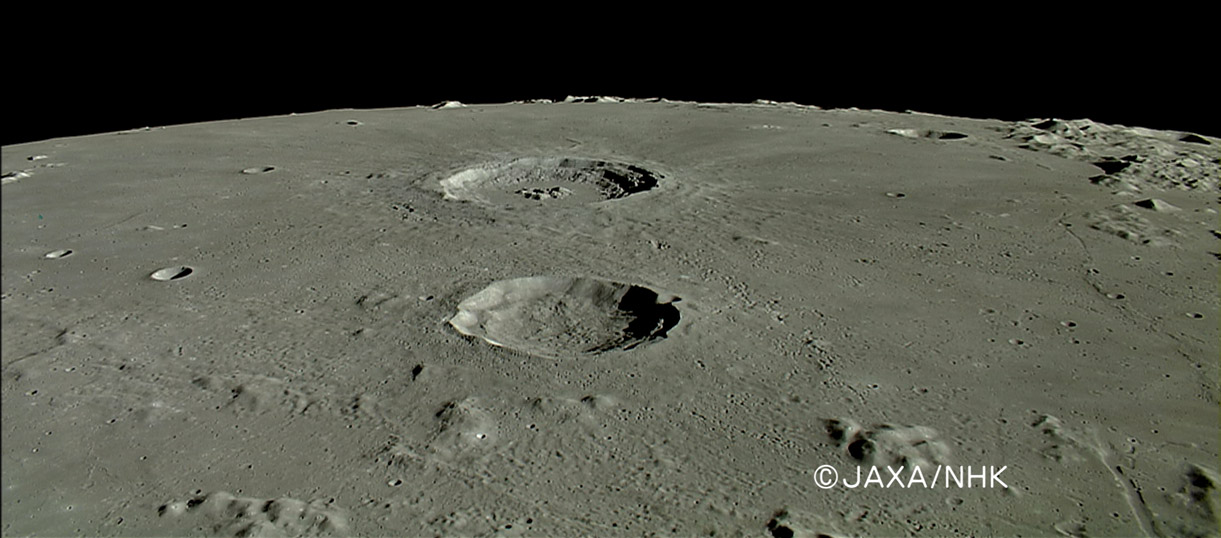March 8, 2018
A & A
Originally published October 11, 2008

image from JAXA/Selene (2008.10.09 option)
The Japanese Aerospace Exploration Agency has once again quietly released a series of Kaguya HDTV images of the Moon, including a second Earthrise. But I find the images of the lunar surface more interesting, including this one looking north past Autolycus and Aristillus. The Caucasus Mountains are to the right and the Alps are on the horizon straight ahead, with Mt Piton the isolated peak. The A & A craters are wonderfully placed to compare the two ways crater walls collapse. Thirty-nine kilometer wide Autolycus has a long scarp that goes from rim crest to floor, at least in some places, with chaotic mounds of wall debris along the floor edges and scattered across the middle. The slightly larger Aristillus (55 km) is a classic Copernicus look-alike crater with terraced walls and a smooth floor punctured by massive central peaks. Both are considered complex craters, for their original shapes have been strongly modified by collapse. But the nature of the collapse depends on crater diameter, with most craters with diameters from 20 to 45 kilometers looking like Autolycus, while nearly all larger ones look like Aristillus. Apparently, the walls of small simple craters don't collapse, medium size crater walls do as separate clumps of landslides, and large craters have entire wall collapses producing concentric terraces.
Chuck Wood
Related Links
Rükl plate 12
Yesterday's LPOD: The Left Side of Hell
Tomorrow's LPOD: Moon Science for All
COMMENTS?
Register, Log in, and join in the comments.



